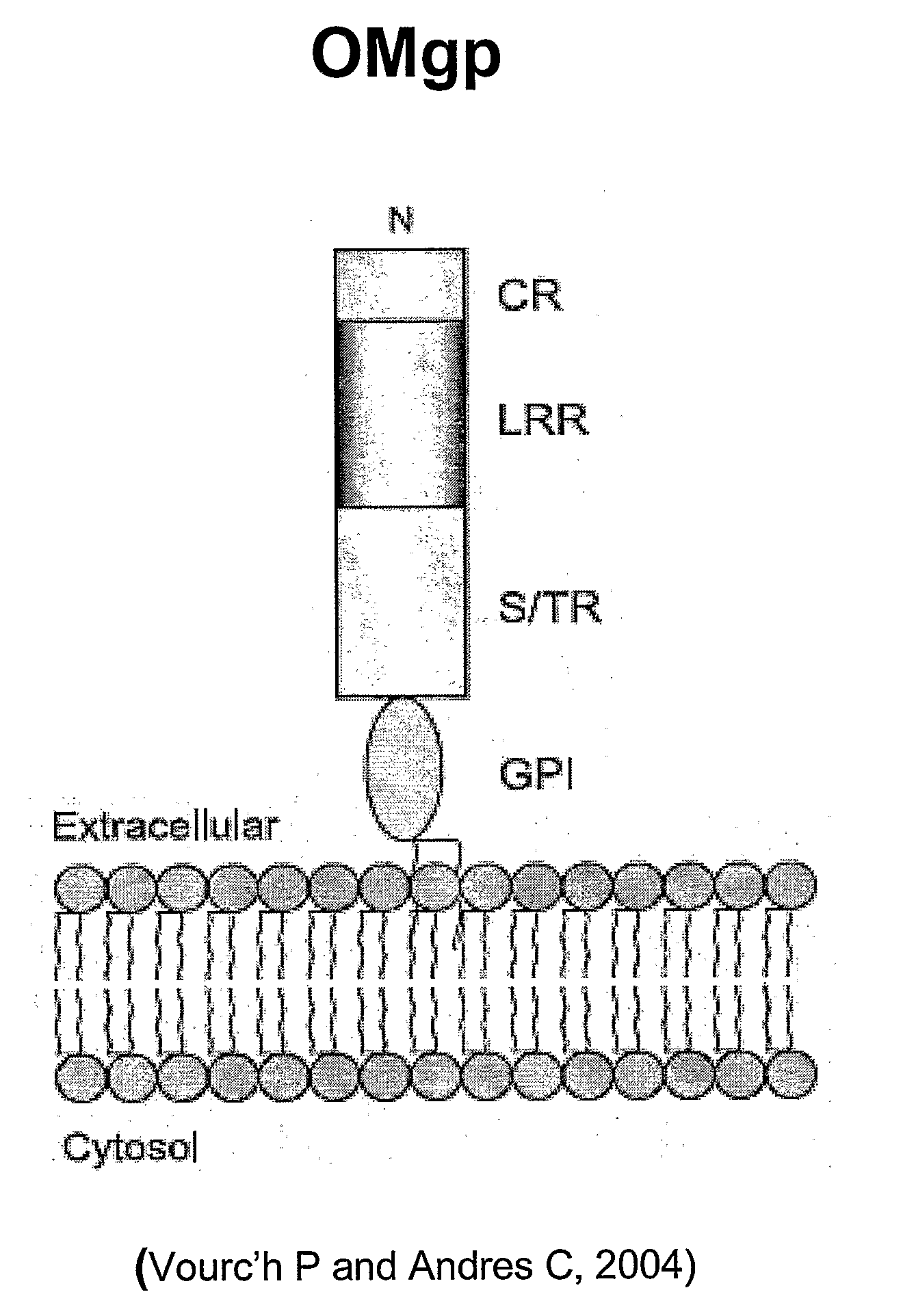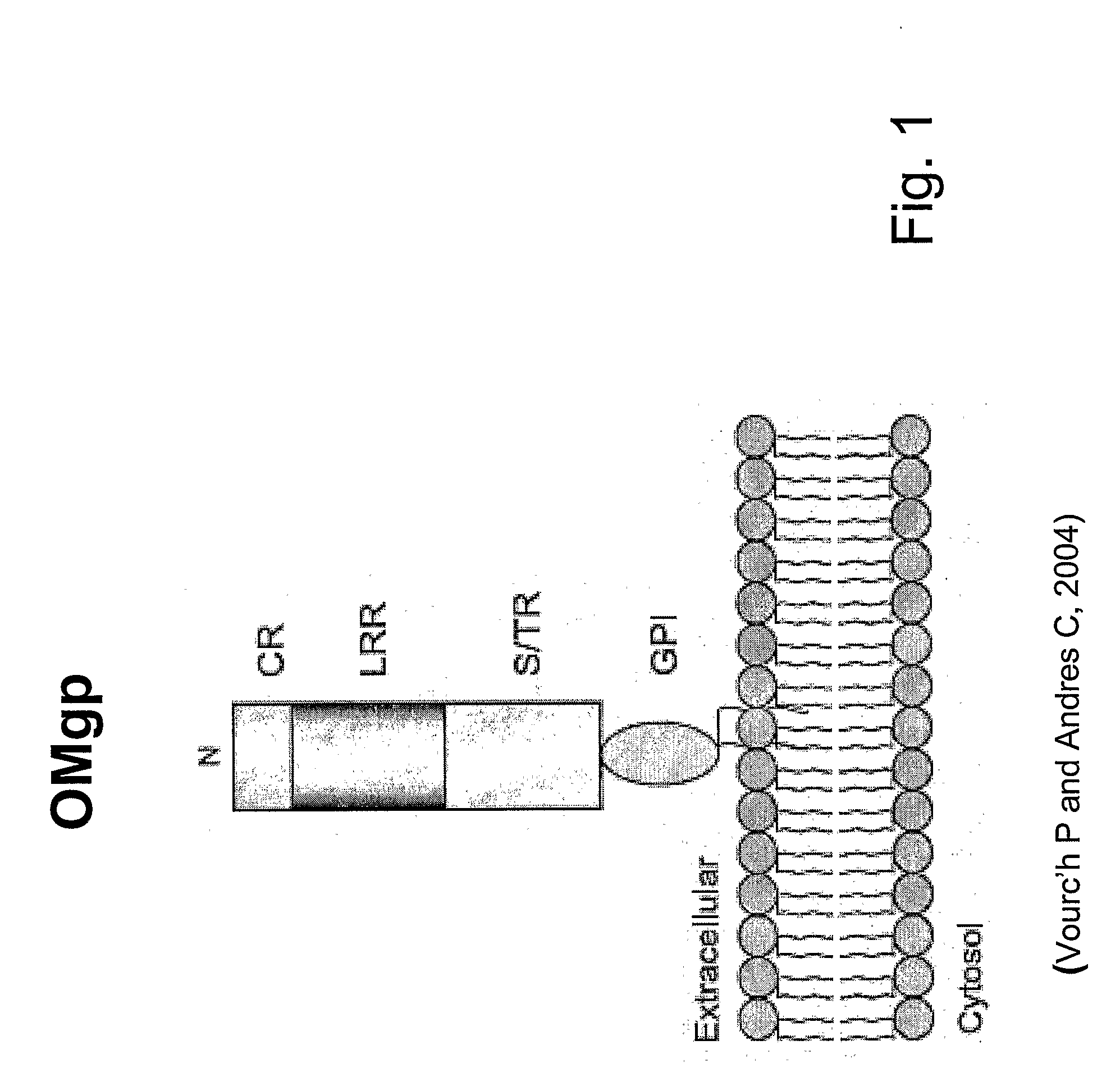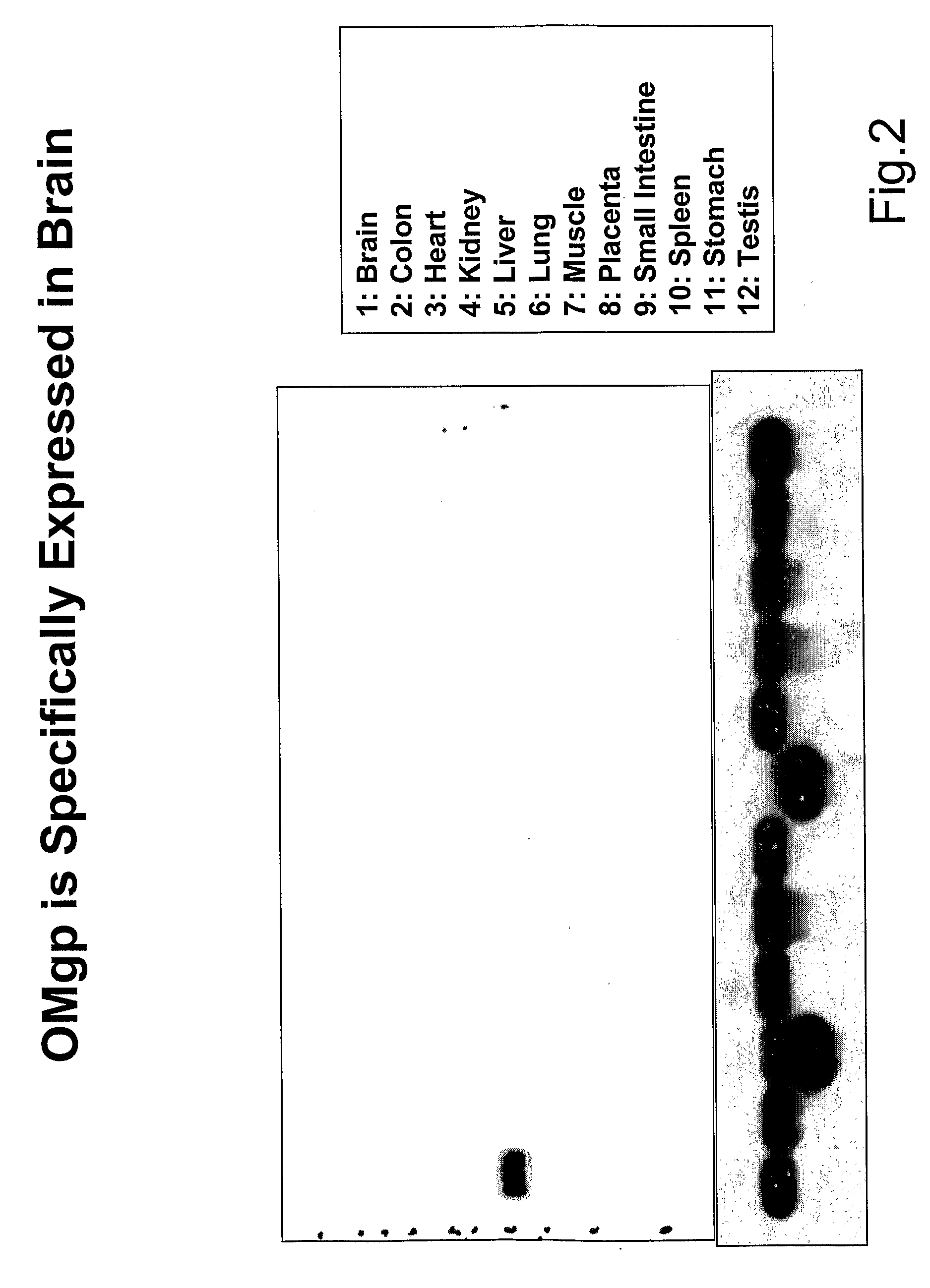Oligodendrocyte-Myelin Glycoprotein Compositions and Methods of Use Thereof
a technology of oligodendrocytes and glycoproteins, applied in the field of neurology, neurology and pharmacology, can solve the problems of damage to neurons that do not regenerate in the central, degradation of myelin surrounding axons, etc., and achieve the effects of promoting neuronal and oligodendrocyte survival and differentiation, and negative regulation of oligodend
- Summary
- Abstract
- Description
- Claims
- Application Information
AI Technical Summary
Benefits of technology
Problems solved by technology
Method used
Image
Examples
example 1
OMgp is Specifically Expressed in the Central Nervous System
[0324]Various rat and human tissues were examined for the expression of OMgp. A human Multiple Tissue Northern (BD MTN™) Blot (Clontech, Mountain View, Calif.) and a rat multiple tissue Northern blot (Cat. # RB2030, Origene, Rockville, Md.) were purchased which contained mRNA from various tissue types. Messenger RNA from brain, colon, heart, kidney, liver, lung, muscle, placenta, small intestine, spleen, stomach and testis were examined for OMgp mRNA transcription. The OMgp probe used with the previously mentioned blots was produced by PCR with the following primers:
5′ PCR Primer-5′-GCCCACAGCCAGAAACAGTT-3′(SEQ ID NO:15)3′ PCR Primer-5′-TCCAGGGTCCTCAGATTGGTAT-3′.(SEQ ID NO:11)
[0325]Northern blots were hybridized overnight at 68° C. with 32P labeled OMgp probe (product of the PCR reaction described above). The blots were then washed 3 times with 2×SSC, 0.5% SDS and then three times with 0.5×SSC, 0.1% SDS. The blots were expos...
example 2
Creation of OMgp Knock-Out Mouse
[0328]OMgp is expressed by oligodendrocytes and neurons. To further investigate the role of OMgp in neuronal and oligodendrocyte function, a mouse which was null for the OMgp locus was created.
[0329]OMgp knock-out mice were generated with a GFP / Neo (green fluorescent protein / neomycin) replacement vector that targeted the entire, single exon coding sequence of OMgp as described by Schiemann et al. (Science 293: 2111-2114 (2001)). Mouse genomic 129 / SvJ DNA was isolated from a lambda genomic library (Stratagene # 946313; Stratagene, La Jolla, Calif.). A 9.9 kb NotI-EcoRV fragment was subcloned into pBSK+ (Stratagene, La. Jolla, Calif.), then targeted by homologous recombination in bacteria to insert an eGFP reporter gene and neomycin antibiotic resistance gene at the initiating ATG codon of OMgp. The final construct deleted the entire 1-1299 nt single exon coding sequence of OMgp. See FIG. 4A.
[0330]This construct was then used to target the OMgp locus in...
example 3
Increased Number of Hippocampal Neurons in OMgp Knock-Out Mice Cell Cultures
[0335]OMgp knock-out mice and wild-type mice were sacrificed at day E15 and their brains were removed. Cells from the cortex, hippocampus, and cerebellum were isolated according to the following protocol. Only the hippocampus is referred to in the protocol, but the same protocol was used for isolating other portions of the mouse brain as well. Poly-L-lysine coated coverglasses were placed into 24 well tissue culture dishes and 300 μl of plating medium (2 mM L-glutamine, 1× penicillin-streptomycin, 1×B27, 50 μM glutamateric acid in neurobasal medium) was added to each well. 3-4 ml of S-MEM was added to 60 mm Petri dishes (1 petri dish for two brain) and the Petri dishes were kept on ice. The hippocampi were dissected out of the mouse brain and then minced into small pieces. The minced hippocampi were transferred into a 15 ml tube with 2 ml of S-MEM for every 10 hippocampi. Trypsin was added to a final concent...
PUM
| Property | Measurement | Unit |
|---|---|---|
| Solubility (mass) | aaaaa | aaaaa |
Abstract
Description
Claims
Application Information
 Login to View More
Login to View More - R&D
- Intellectual Property
- Life Sciences
- Materials
- Tech Scout
- Unparalleled Data Quality
- Higher Quality Content
- 60% Fewer Hallucinations
Browse by: Latest US Patents, China's latest patents, Technical Efficacy Thesaurus, Application Domain, Technology Topic, Popular Technical Reports.
© 2025 PatSnap. All rights reserved.Legal|Privacy policy|Modern Slavery Act Transparency Statement|Sitemap|About US| Contact US: help@patsnap.com



